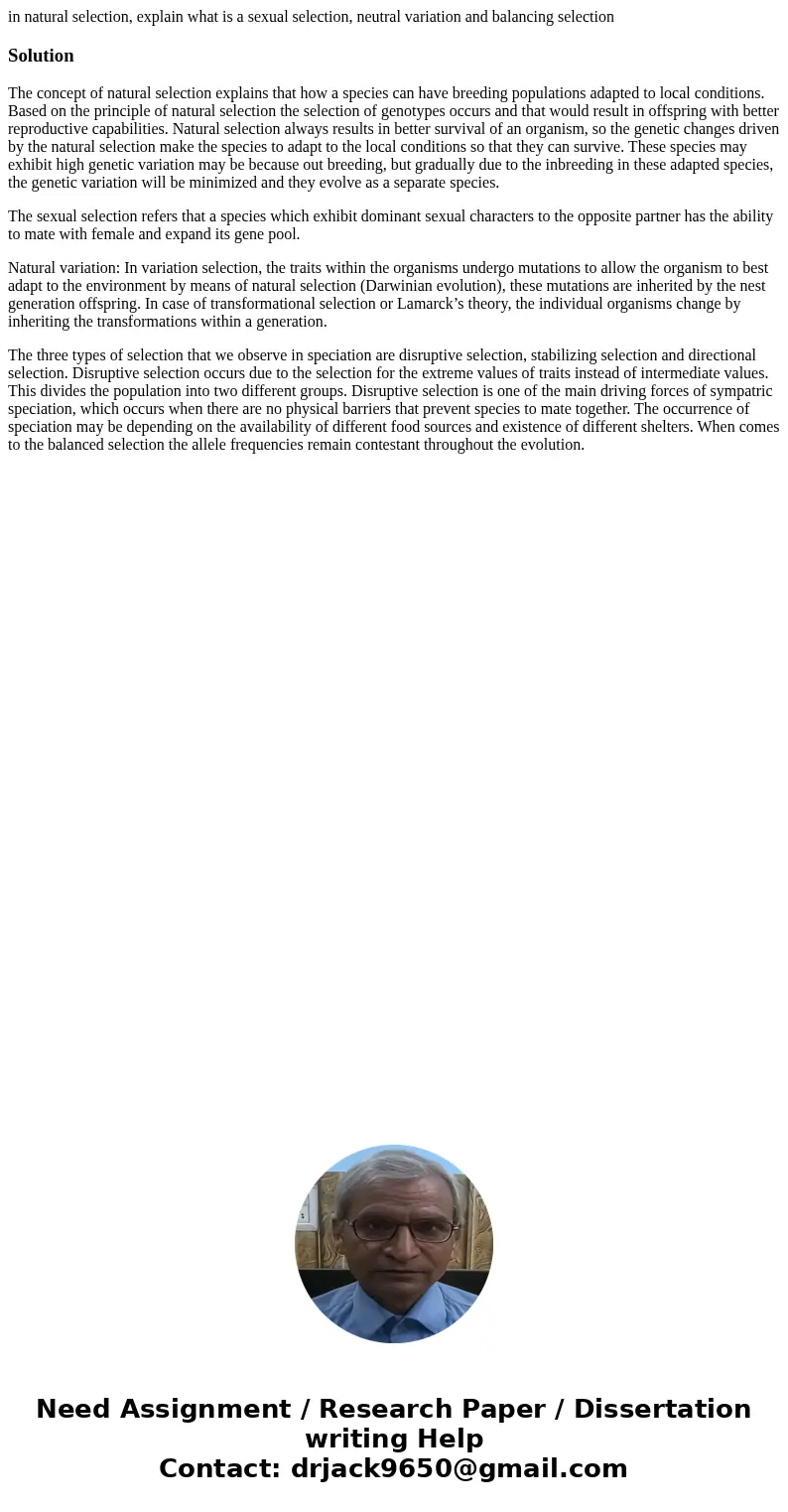in natural selection explain what is a sexual selection neut
in natural selection, explain what is a sexual selection, neutral variation and balancing selection
Solution
The concept of natural selection explains that how a species can have breeding populations adapted to local conditions. Based on the principle of natural selection the selection of genotypes occurs and that would result in offspring with better reproductive capabilities. Natural selection always results in better survival of an organism, so the genetic changes driven by the natural selection make the species to adapt to the local conditions so that they can survive. These species may exhibit high genetic variation may be because out breeding, but gradually due to the inbreeding in these adapted species, the genetic variation will be minimized and they evolve as a separate species.
The sexual selection refers that a species which exhibit dominant sexual characters to the opposite partner has the ability to mate with female and expand its gene pool.
Natural variation: In variation selection, the traits within the organisms undergo mutations to allow the organism to best adapt to the environment by means of natural selection (Darwinian evolution), these mutations are inherited by the nest generation offspring. In case of transformational selection or Lamarck’s theory, the individual organisms change by inheriting the transformations within a generation.
The three types of selection that we observe in speciation are disruptive selection, stabilizing selection and directional selection. Disruptive selection occurs due to the selection for the extreme values of traits instead of intermediate values. This divides the population into two different groups. Disruptive selection is one of the main driving forces of sympatric speciation, which occurs when there are no physical barriers that prevent species to mate together. The occurrence of speciation may be depending on the availability of different food sources and existence of different shelters. When comes to the balanced selection the allele frequencies remain contestant throughout the evolution.

 Homework Sourse
Homework Sourse